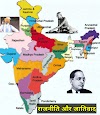Airbus A320 (RAT) Ram Air Turbine
The RAT is installed in the aircraft as a safety backup to provide electrical and hydraulic power if the primary sources of aircraft power that is main AC Bus1 and AC Bus 2 are both lost which is mostly happens due to both engines failures. Ram air is used to rotate the two turbine blades of RAT unit that operates a hydraulic pump and generator for emergency use. The turbine and pump system, referred to as RAT, is usually mounted on the inside surface of a fuselage door.
The door is hinged to the fuselage and can be extended into the slipstream by pulling a manual release on the flight deck. When the main hydraulic pressure system fails and/or the electrical system fails in some aircraft, the RAT deploys automatically.
RAT Deployment Logic in Airbus A320
The Ram Air Turbine (RAT) is deployed automatically if all AC electrical power sources are lost and the aircraft speed is greater than 100 kts, or it may be manually deployed by using either one of the guarded Push Button Switch. As soon as the RAT unit gets it electrical commands automatically or manually to extend its started supplies hydraulic power in less than 4.5 seconds. The hydraulic pressure supplied by a RAT unit is sufficient to operate the flight controls and the CSMG for electrical power. The blue hydraulics system drives the emergency generator for electrical power.
Electrical Power from RAT
The CSMG will supply 5 KVA of three phase 115 volt and 200 volt 400 HZ electricity. DC power is supplied to the ESS DC bus bar by the Essential Transformer Rectifier unit.
The Power from the RAT is available and will operate the specific system throughout the entire flight.
Protection Devices on RAT
The RAT has a stall protection device which prevents RAT from stalling below the governed speed range. The stall protection device limits the maximum power the pump can extract from the turbine.
The RAT has also installed with a de-icing device on nose cone of the turbine hub as a safety from icing condition. The de-icing device produces enough heat to prevents icing of the turbine hub when the RAT is in operation in icing condition. The de-icing heat is produced by the eddy current heating elements.
The Ram Air Turbine is a constant-speed variable-pitch unit with two blades. The mechanical governor and the pitch-change unit are installed in the hub of RAT.
At low aircraft speed the governor spring holds the in FINE position fir higher power extraction.
At high aircraft speed the governor spring holds the in COARSE position for lower power extraction.
RAT Installation & Working
The RAT actuator us attached to the top end of leg assembly and the RAT mounting frame on the fuselage. The Spring force extend the RAT into the slip stream and no hydraulic power is necessary to extend the RAT. The Hydraulic power is only required to retract the RAT and the RAT only can be retracted when the aircraft is on the ground.
There are Two solenoids and one proximity switch are also installed on the RAT actuator. The Two solenoids releases a lock which allow the RAT to extends. The RAT extends when both or one solenoid is energized by electrical command, an extend lock holds the RAT in the extended position for entire phase of operation.
A stow proximity switch are also installed which sends signal to the ECAM for RAT's Position.
Ram Air Turbine (RAT) ECAM Messages
White RAT Light: RAT is stowed
Green RAT Light: RAT is not stowed
Amber RAT Light: Pressure for stowing the RAT has been applied, or the RAT pump is not available.
RAT MEMO DISPLAY
RAT OUT appears Green, if the Ram Air Turbine is not fully stowed.
The color changes to Amber during flight Phases 1 and 2.
HYD PTU appears Green, when the Power Transfer Unit (PTU) is running.










0 Comments